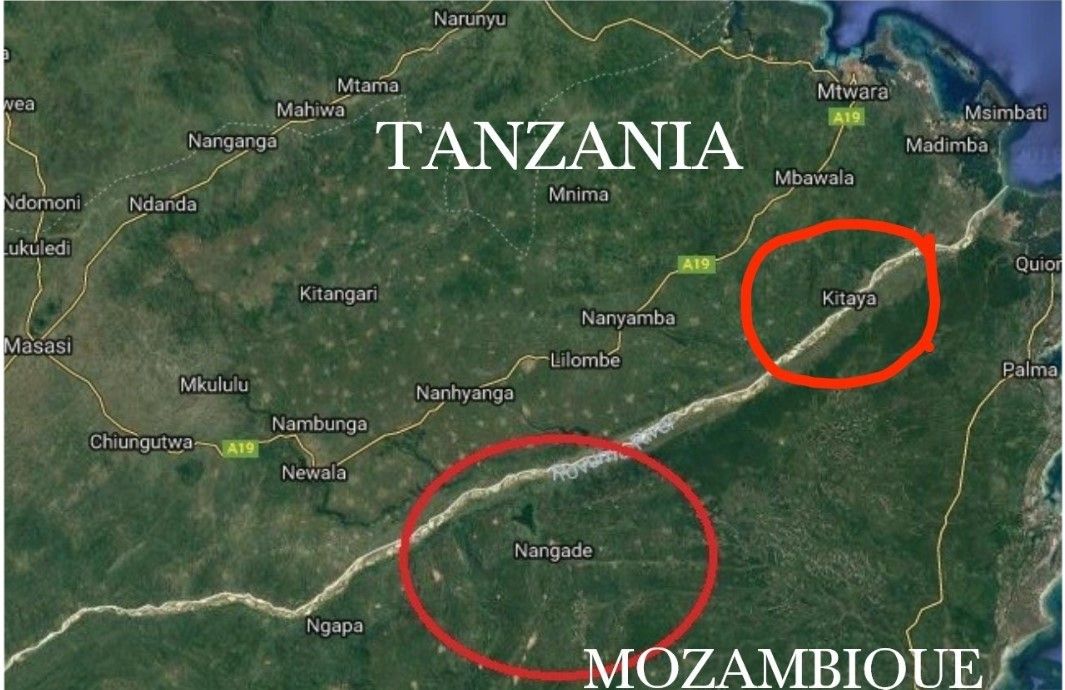Cabo Delgado Insurgency: Tanzanian Military Deny Mtwara Attacks, Residents Scared to Talk as State Restricting Reporting by Local Media Continues

Tanzanian security forces deny insurgent attacks in the Mtwara region, near the border with Mozambique. DW Africa sources, however, express great concern about what is happening on the ground.
Brigadier General Marco Gaguti said this Wednesday (27.10.21) that there is no news of attacks allegedly carried out by insurgents in southern Tanzania.
"Our systems are strong. All villages have leadership and there is nothing that can happen without us knowing," said the regional commissioner of Mtwara in an interview with DW Africa.
According to Gaguti, the situation is calm in the region and there are no records of violence. "The borders in the region are secure," he said.
The Tanzanian military's statements come after reports of armed attacks in southern Tanzania, which would have been perpetrated by insurgents who provoked the security crisis in Cabo Delgado.
Residents don't want to talk
On the other hand, DW Africa also heard other sources in the region who expressed great concern about what is actually happening on the ground, but did not want to be cited or recorded an interview claiming fear.
According to Abudo Gafuro, from the Kuendeleya Association, displaced people coming from the border regions between Mozambique and Tanzania confirmed two attacks in the Mtwara region , in Tanzania.
"We don't know if there are human victims, but there was an exchange of fire. There were two simultaneous attacks, carried out by a group of terrorists. It is assumed that they are the ones in disband, fleeing Mozambique to the other side.", said Gafuro, who investigates details of the episodes.
For the activist, who is also collaborating with investigations by the Institute of Social and Economic Studies (IESE), the fighters of the radical Islamic group would be without ground, because their bases were destroyed in the province of Cabo Delgado.
"The joint forces are now doing some cleanup work, which implies that the terrorists are looking for a place to take refuge. It is obvious that it is Tanzania, because it was one of the doors they used to enter Mozambique." he said.
In October 2020, Tanzanian police confirmed that around 300 jihadists had carried out an attack in the south of the country and revealed that the terrorist group "Islamic State" was behind the action. At the time, reports gave an account of about 300 terrorists who left Mozambique and attacked the post in Kitaya, in Mtwara. According to Tanzanian police "some people" were killed in the incident.
SOURCE: DW
Meanwhile, Cabo Ligado reports
Incident Focus: Tanzania’s Information Environment
The scale, military success, and political focus of the 14 October 2020 attack last year on the Tanzanian border town of Kitaya seemed to presage a significant shift in the conflict. Just ten days before a general election, insurgents were able to mobilize a large force, overrun a town with an estimated population of over 5,000 people, and repulse a military detachment stationed nearby. Video clips of fighters ripping up election posters of President Magufuli echoed previous threats made against him by jihadist groups in Democratic Republic of Congo, as well as the propaganda that had been spreading all year in East Africa’s jihadist spaces on social media.
The Kitaya attack marks the high point of insurgent actions in Tanzania. Security operations in Mtwara and Ruvuma regions involving military, police, and national intelligence -- which were already significant -- were strengthened in the wake of the Kitaya attack. Thus, subsequent to the Kitaya attack, ACLED records just three attacks in Mtwara from October 2020 to February 2021. Since February, ACLED has recorded only three violent clashes in Mtwara, all of which have occurred since the interventions by Rwanda, and by the Southern Africa Development Community (SADC) Mission in Mozambique (SAMIM).
These are sparse data, and may reflect restrictions on access to information put in place by Tanzanian authorities since the conflict began more than the actual rate of incidents. The attack on Kitaya was not officially acknowledged until one week after the incident. Given its scale, news of it started to circulate immediately, making it difficult to deny. Reports of smaller attacks or clashes involving small groups, perhaps focused on looting shops in small settlements, is easier to suppress, and when received is not always verifiable. Indeed, the Tanzanian military last week publicly denied that the confirmed insurgent attack of 20 October in Kilimahewa, Tandahimba district took place.
Restricting reporting by mainstream media in Tanzania is straightforward for the Tanzanian state. Arbitrary suspension of media outlets has always been a feature of Tanzanian governance. The memory of Azory Gwanda, a journalist for the Aga Khan-owned Mwananchi Communications, also looms large. Gwanda was taken by unknown people in November 2017 while covering the security operations taking place then in Kibiti District, Pwani Region against an incipient jihadist insurgency whose leaders fled to Cabo Delgado. He is believed to be dead. Perhaps inevitably, this has led to an increasing reliance by the media on Mozambican sources that have contacts in Tanzania rather than drawing directly from Tanzanian sources for news of insurgent action in Tanzania.
Despite these restrictions, as noted, Cabo Ligado has been able to verify three incidents in Tanzania since international intervention in Cabo Delgado, all small scale involving less than twenty attackers, with securing supplies confirmed as a motive in two attacks. Verified clashes have taken place in border areas in Tandahimba District, and across the border from Nangade, and in Mtwara District, the rural areas to the east of Mtwara region, across from Palma District. These reflect the breaking up of insurgent camps and disruption of supply networks on that side, involving the Tanzania People’s Defence Force SAMIM contingent stationed in Nangade.
With Tanzania now having a significant military presence on both sides of the border, we can expect that access to information will remain at a premium.
